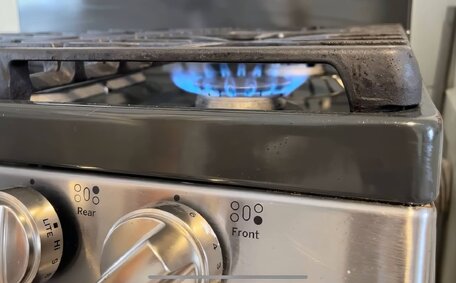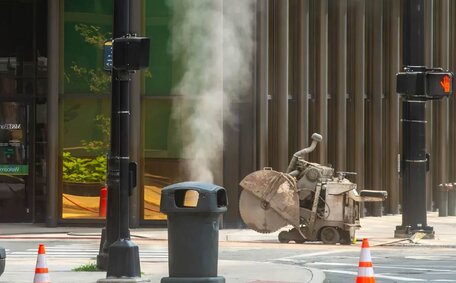Understanding Hot Water Temperature Safety
It’s crucial for safety and efficiency that your hot water system maintains the correct temperature. Overly hot water significantly increases the risk of scalds, especially for vulnerable groups such as children and the elderly.
For solar hot water systems, the ideal temperature range is 60-65°C to effectively kill bacteria, but this should be tempered down to 50°C at fixtures for safety and comfort. Incorrectly tempering can elevate water temperatures above 50°C, increasing scalding risks.
Elements such as the sacrificial anode and TPR valve are crucial for temperature regulation in hot water systems. Annually flushing sediment from the tank improves energy efficiency in heating water. Regular servicing by a professional ensures safe water heating temperatures and system functionality.
Thermostatic mixing valves (TMVs) introduced near fixtures help control water temperature for point-of-use, blending hot water from the tank with cold water to maintain a safe 50°C.
Recommended Temperatures for Hot Water Systems
A hot water system should hold water at 60-65°C, a level that is effective against bacteria but can be tempered to a safer 50°C at access points to prevent scalding.
Setting your water heater to 49°C accommodates potential fluctuations, guaranteeing a consistent and safe output of 50°C after tempering.
Consider fitting a tempering valve to blend hot and cold water automatically, ensuring a consistent 50°C at each point of use.
Annual maintenance, such as sediment flushing and component checks, is essential to maintain optimal hot water temperature and consistent flow.
Preventing Bacterial Growth
Maintaining water temperatures between 60°C and 65°C in your system is key to preventing bacterial growth, such as the dangerous Legionella, as heat eradicates bacteria before the water is tempered for use.
If water temperatures fall below 60°C, Legionella can quickly proliferate, particularly in pipes, endangering health through inhalation of water aerosols from showers or faucets.
To deter Legionella, set your water heater thermostat to at least 60°C. While higher temperatures up to 74°C further control bacteria, they also elevate scalding risks; hence, a range of 60-65°C is ideal for both prevention and safety.
Annual flushing of hot water heaters to expel sediment also helps control Legionella by eliminating an environment where the bacteria can flourish.
A continuous flow water heater guarantees a steady supply, which is beneficial for consistent quality and temperature control. Maintain the water pH between 7.2 and 7.8 and arrange for professional testing and disinfection if bacteria levels spike.
Avoiding Scalds and Burns
Hot water presents a high scald risk for groups like children and the elderly. Temperatures exceeding 52°C can cause severe burns rapidly, hence water should be no more than 50°C when delivered to fixtures.
Installing a mixing valve near points of use can automatically temper hot water for safety. Additionally, set up anti-scald devices on basins and baths to control the maximum water temperature.
Consider setting your thermostat to sustain a safe temperature of 60-65°C in your hot water tank.
Make sure to seek professional help to adjust hot water temperature levels in your home. Check and make sure your tap water temperatures are safe before bathing or showering to prevent scalding. Educate children to be careful with hot water.
Components Critical for System Health
Several key components help maintain the temperature your water heater requires for function and safety.
Sacrificial Anode
The sacrificial anode is a metal rod inside the tank that corrodes before the tank itself does. Checking your tank yearly and replacing as needed prevents corrosion.
TPR Valve
The temperature-pressure relief valve is a vital safety feature that activates if temperature or pressure becomes excessive, averting potential explosions. Regular testing is critical to verify its proper operation.
Thermometer
Use a tank thermometer to monitor the water temperature, ideally placed at the tank’s top to measure the maximum heat.
Heating Element
The heating element for your type hot water system at the base of the tank can also be inspected for sediment buildup and signs of wear during annual servicing. Replacing it proactively avoids failure.
Having a professional ensure your hot water can be serviced annually through visual temperature checks, testing, and replacement as needed optimises system health and safety.
The Sacrificial Anode
The sacrificial anode is a metal rod installed inside the hot water tank. Its purpose is to preferentially corrode, thereby protecting the tank. As the anode rod corrodes over time, it must be inspected and replaced to keep protecting the tank.
Anodes typically need replacing every 4-5 years. Signs it might need earlier replacement include:
- Corrosion, pitting or chunks of the rod missing
- Significant reduction in diameter
- Production of black or grey water from the hot water outlets indicating tank corrosion
Replacing the anode rod regularly is essential to prolong tank life span to 10+ years. Check annually and replace when inspection reveals excessive wear. A plumber can determine if replacement is needed.
Temperature and Pressure Relief Valves
Temperature and Pressure Relief (TPR) valves are critical safety components on hot water systems. These valves help prevent dangerous situations by releasing water if either the temperature can get too high or the pressure builds excessively.
It is essential to test that the TPR valve can relieve pressure properly with regular inspections. Mineral deposits or corrosion can cause valves to fail, remaining shut even with excess tank pressure or heat. This can lead to explosions, flooding, injuries or even death.
Inspect your TPR valve at least annually. Replace immediately if faulty.
Ensure there’s no obstruction, leaks, or drips; if maintenance is necessary, turn off the gas hot water system safely during normal operation. Manually turn hot water on to test the valve and check heater temperature according to the manufacturer’s instructions.
Proactively replacing TPR valves every 5 years ensures they will operate correctly in case of emergency. Your licenced technician can confirm if testing reveals your existing valve needs replacement.
Professional Maintenance for Safety and Efficiency
Yearly professional servicing by a reputable service like Rockdale Plumbing ensures a thorough evaluation and maintenance of critical components to optimise your gas water heater’s performance and longevity.
A licensed technician will inspect the sacrificial anode, TPR valve, heating element, and temperature controls. They can fine-tune your thermostat settings, clear sediment, and spot any issues early to avoid hazards or expensive repairs.
Preventative maintenance is key to maintaining your hot water system’s efficiency and preventing issues such as corrosion, bacterial growth, or scalding hazards, as well as upholding warranties on components like valves and elements.
Contact our team on 1300 349 338 to book your annual hot water system inspection and tune-up. Help prolong system life and safety for your family.
Installing Temperature Control Devices
For tankless water systems, installing temperature control devices such as thermostatic mixing valves (TMVs) is a practical way to regulate water temperature. TMVs combine hot and cold water to ensure a consistently safe and moderated flow to your taps and showers.
TMVs consist of a thermostat to gauge the outgoing water temperature and a valve that balances the mix of hot and cold water to reach the ideal outlet temperature. The target temperature for most TMVs is 50°C.
Benefits of installing TMVs include:
- Prevent scalds - Mix water to safe 50°C before delivery
- Save energy - Only heat water to 60-65°C in tank, not point of use
- Reduce fluctuations - Maintain steady temperature despite heating cycles
- Simple adjustability - Change outlet temperature by adjusting the TMV
For the highest safety and reliability, have a professional plumber install TMVs according to manufacturer standards. Position them close to outlets for bathroom and kitchen taps. TMVs require annual inspection and maintenance by a licensed plumber to ensure ongoing performance.
Thermostatic Mixing Valves
Thermostatic mixing valves, positioned near fixtures, blend hot and cold water from the tank to deliver it at a safe temperature, typically around 50°C, to prevent scalding.
A wax-filled thermostat inside the TMV measures outgoing water temperature and controls a valve to modulate the proportions of hot and cold input water mixing to maintain the target temperature. If the hot water temperature fluctuates at the source, the TMV will adjust the mix accordingly, protecting users.
Benefits of installing TMVs include preventing scalds, saving energy by only heating to 60-65C in the electric water heater tank, reducing temperature fluctuations from heating cycles, and simplified adjustments. For peak safety and performance, ensure TMVs are fitted near outlets by a skilled professional and undergo yearly maintenance.
Conclusion and Call to Action
Maintaining proper solar hot water system temperatures between 60-65°C is crucial for hot water safety, bacterial prevention, scald prevention, and operational efficiency. However, temper down to 50°C at points of use to prevent injuries.
Regular maintenance, which includes checking the sacrificial anode, TPR valve, heating element, and temperature controls, and proactively replacing parts, boosts system health and longevity.
We recommend installing tempering valves to automatically blend hot tank water with cold to deliver 50°C for safe use. Valves also save energy and reduce fluctuations.
To ensure your hot water system maintains optimal temperatures, seek expert assistance from Rockdale Plumbing at 1300 349 338 or email [email protected]. Our licensed technicians can advise on efficient and safe solutions.
Annual servicing not only enhances performance and prevents malfunctions but also ensures your system is safe for your household.






